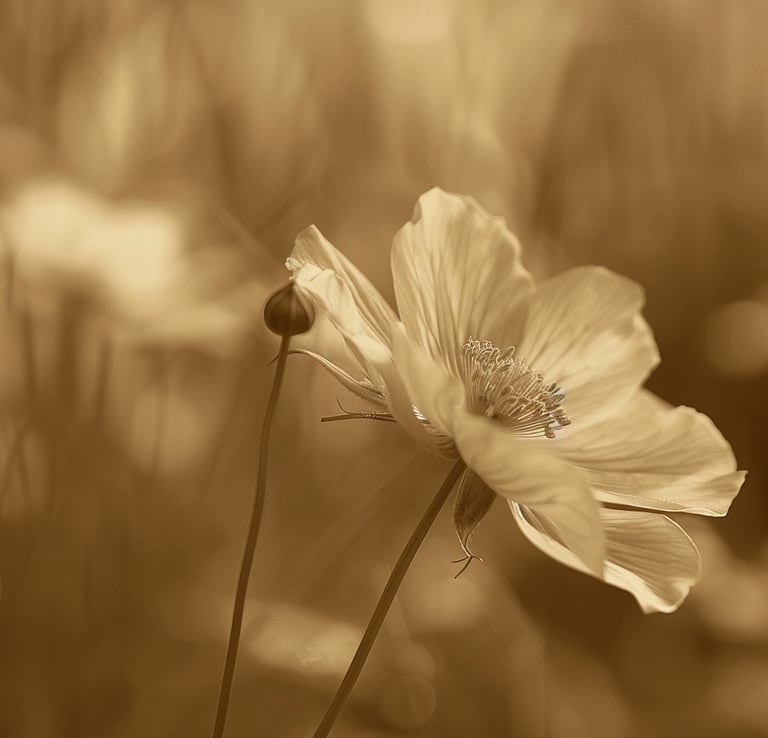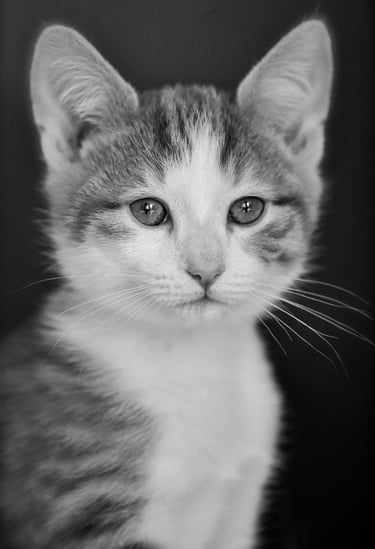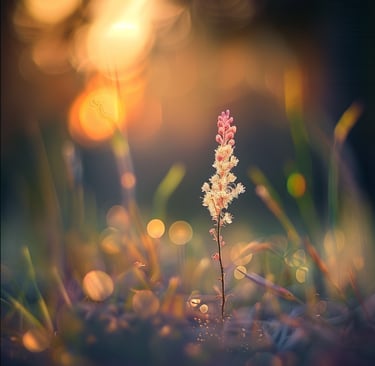All Bokeh is Blur, But Not All Blur is Bokeh - Let that sink in.
PHOTOGRAPHY PERSPECTIVES
In the realm of photography, "blur" has been a fundamental element since the inception of the camera. Initially considered a flaw or a lack of focus, photographers gradually began to appreciate blur for its ability to separate subjects from their backgrounds, thereby enhancing the photo's narrative. This appreciation of blur has evolved significantly over the decades, transforming into an artistic tool that adds depth, emotion, and focus to photographic storytelling.


Shallow depth of field, creamy bokeh
Origins and Evolution
Historically, the concept of deliberately using blur in photography did not have a specific term. In the early days of photography, blur was often an unwanted byproduct of technical limitations, such as slow shutter speeds or imprecise focus. However, as photographic technology advanced, and as photographers gained more control over their instruments, blur transformed from an accidental occurrence into a deliberate artistic choice.
The term "bokeh" itself originates from the Japanese word "boke" (暈け or ボケ), which means "blur" or "haze." This term specifically refers to the quality of the out-of-focus areas within a photograph. Although the concept existed in Japanese photographic circles earlier, it was not until the 1990s that the term began to gain traction in the English-speaking photography community.


Understanding Bokeh
Bokeh is not just any blur. It refers specifically to the aesthetic quality of the blur present in the out-of-focus parts of an image. This can be influenced by several factors, including the lens design, the aperture shape, and the distance between the camera, the subject, and the background. Bokeh is often most noticeable in areas with points of light or highlights, which can appear as smooth orbs or shapes reflecting the aperture's form (such as hexagons or octagons).
Differences Between Blur and Bokeh
While all bokeh is blur, not all blur is bokeh. The term "blur" can apply to any part of the image that is not in sharp focus. This can result from camera or subject movement, incorrect focus, or the intentional use of a narrow depth of field. Bokeh, however, specifically describes the quality of the out-of-focus light and its aesthetic contribution to the overall image. It's a subset of blur that pertains only to the areas beyond the depth of field's limits, rather than motion blur or defocusing of the entire image.


Soup vs. Spices
Imagine you're making a soup. The overall "blur" in a photograph is like the broth of the soup – it's the base, essential but not particularly standout on its own. "Bokeh," however, is like the spices you add to the soup. They don't change the base but enhance it, giving it a unique flavour and character without overwhelming the main ingredients.
Types of Bokeh
Bokeh can vary significantly depending on the lens used and the settings chosen. It can be described as creamy, smooth, harsh, or swirly, among other terms. The "creaminess" of bokeh is often prized, as it provides a smooth transition from the focused to the unfocused areas, lending a dreamy quality to the photograph. Swirly bokeh, on the other hand, adds a dynamic, almost whimsical twist to backgrounds, particularly highlighting the character of vintage lenses.


Shallow depth of field blur NO bokeh
The Artistic Significance of Bokeh
Bokeh has become an essential tool for many photographers because of its ability to isolate the subject from the background, thereby reducing distractions and emphasising the focal point. This is particularly prevalent in portrait, macro, and wildlife photography, where the subject's separation from the background can make a dramatic difference in the impact of the image.


Shallow depth of field blur WITH bokeh
Conclusion: Embracing the Blur
The understanding and use of blur and bokeh in photography have come a long way from their origins. What was once considered a technical flaw has become a cherished artistic tool, capable of conveying mood, depth, and focus. As photographers continue to experiment with lens technology and composition, the exploration of blur and bokeh will undoubtedly evolve, continuing to push the boundaries of photographic expression.
In the journey of photography, understanding the nuances of blur and bokeh can significantly enhance a photographer's ability to tell stories through images. By mastering these elements, photographers can create compelling, evocative works that draw viewers into the essence of the moment captured.




